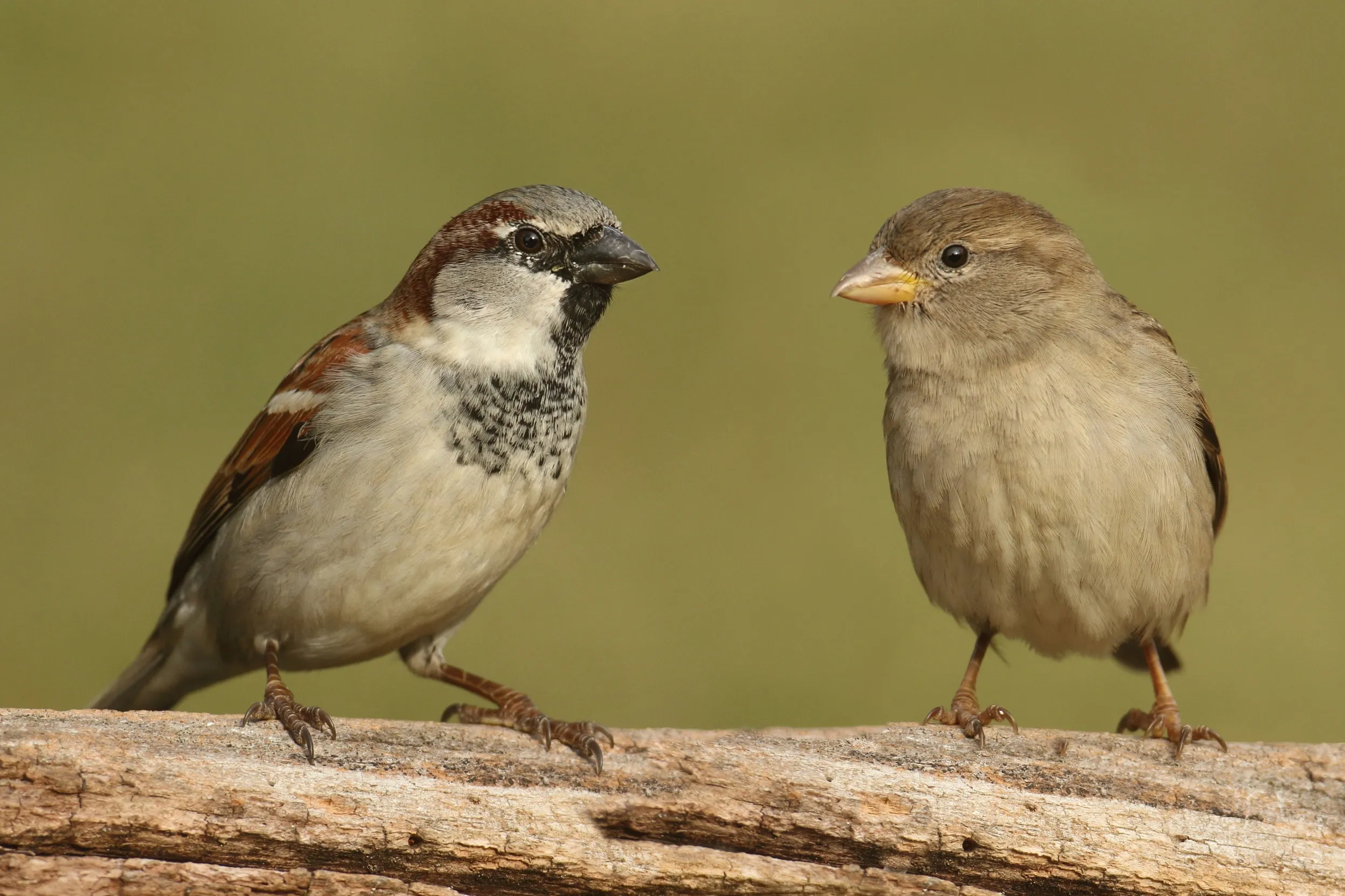
- Length: 14–15cm
- Wingspan: 21–25.5cm
- Weight: 24–38g
Have you seen a small, brown bird in your garden and you’re not sure what it is? There are lots of potential contenders, so take a look at these ID tips to help you to work out the identity of your mystery bird.
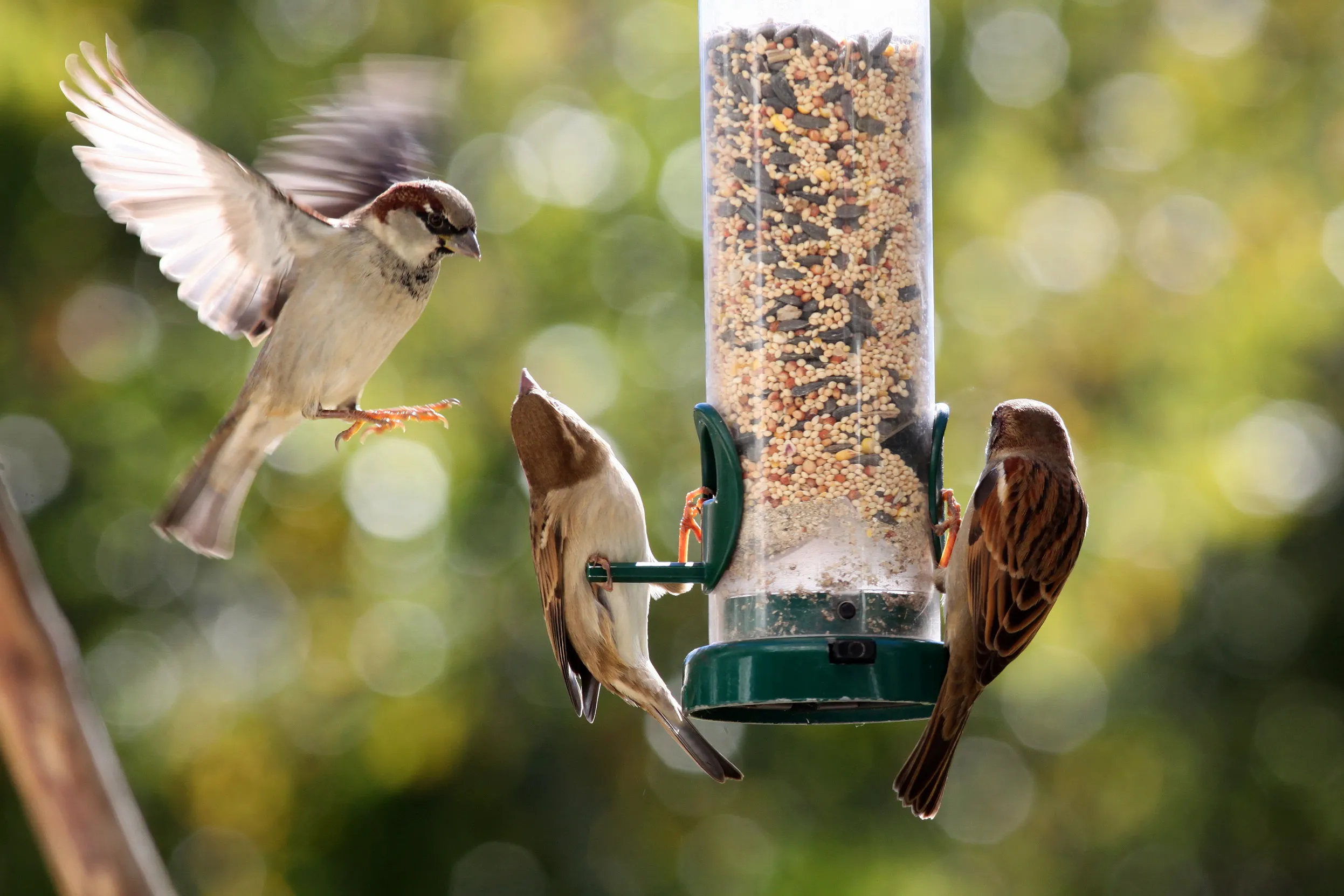
UK conservation status - Red

House Sparrows are sociable birds that tend to live in small groups, often close to people. Adults eat seeds, as well as insects, which is what they feed to their chicks. You’ll often see them hopping around on the ground in groups, or bathing together in a birdbath or pond. They will also happily use bird feeders. House Sparrows have quite short wings and aren’t strong fliers, so they like to stick close to vegetation, ready to dash for cover if a predator appears.

The commonest call is a basic, but often very loud, ‘cheep cheep’. Their song is just this cheep repeated over and over again. In spring, you might hear groups of House Sparrows calling at once from deep within hedges and bushes, making a cheery, chirpy chorus. They also sometimes make a scolding chur, which can be an alarm call.
House Sparrows like to nest in holes or crevices in buildings, but will also nest in hedges or use nest boxes.
All year round
House Sparrows have lived alongside humans for centuries, taking advantage of spilt grain and food scraps. They’re the most common bird seen during the Big Garden Birdwatch and if you put up feeders you’re almost certain to see them (they particularly love fat balls and sunflower hearts). You might also spot them hopping about on city streets, in stations and parks, as well as out in the countryside in hedgerows and on agricultural fields.

House Sparrows are much rarer than they used to be – since 1970, almost 30 million of these little birds have vanished from the UK.
UK conservation status - Red
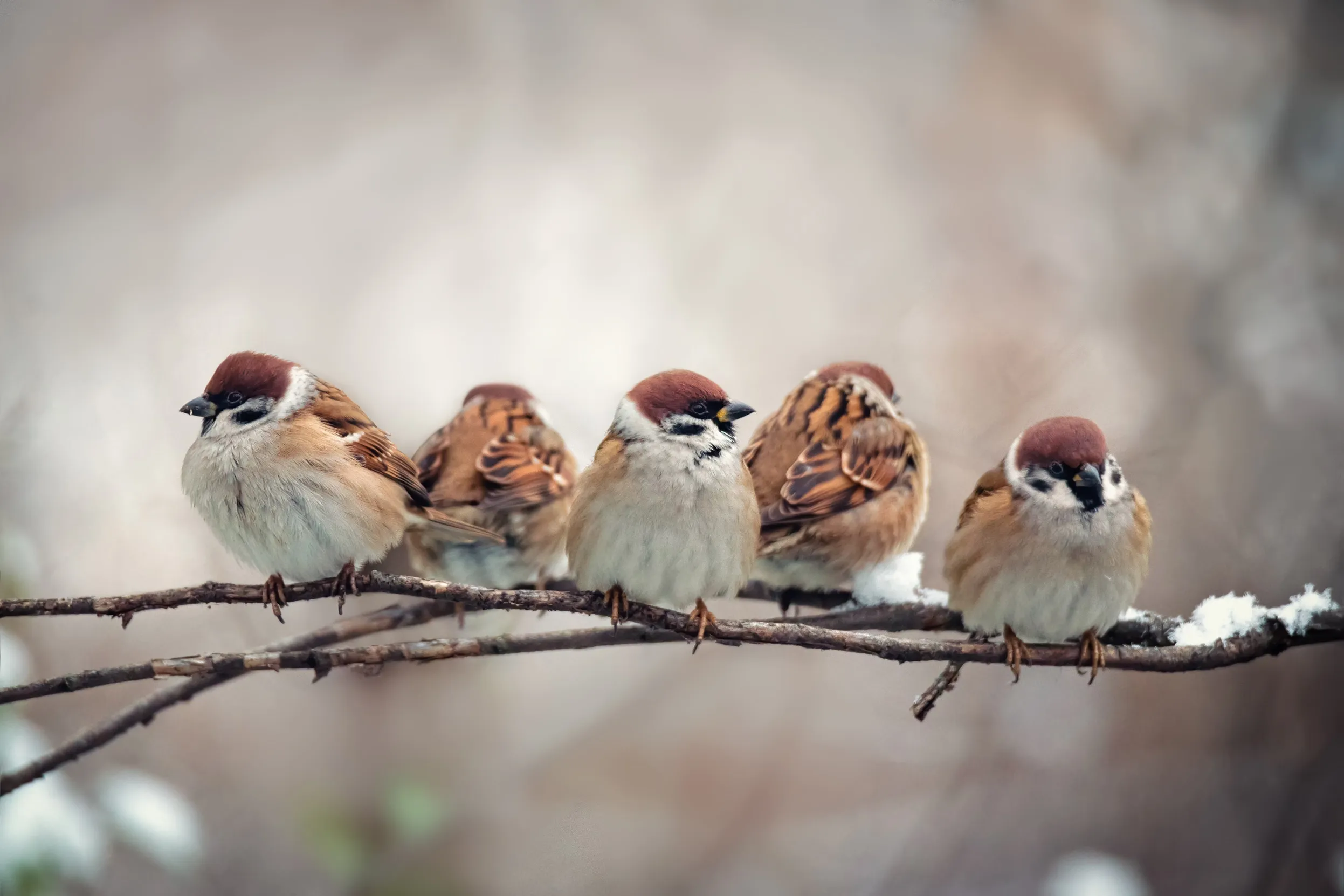
Tree Sparrows are much more timid around people than House Sparrows, and tend to be less boisterous in general. Like House Sparrows, they’re social birds and prefer to nest and live in groups. They eat seeds from grasses and weeds, as well as cultivated grains like barley and wheat. They also eat small insects, which they feed to their young. Tree Sparrows will sometimes come to garden feeders in rural areas, particularly in winter – you might even see them mixed in with groups of House Sparrows.

A Tree Sparrow’s call is similar to a House Sparrow’s, but sounds more like ‘zee zee’ than a straightforward cheep. Again, the song is a continuous repeat of the call.
Tree Sparrows will nest anywhere with a suitable hole or crevice. They sometimes choose to nest in dense bushes or farm buildings, and will use nest boxes. They may also nest in banks and cliffs, even reusing old Sand Martin nests. Conservation projects often put up nest boxes to help support Tree Sparrows where they are struggling.
All year round
Tree Sparrows are birds of the countryside, but their numbers have declined significantly and they are now absent from large parts of southern England, much of Wales, parts of Northern Ireland and most of Scotland apart from the east and south. In areas where they’re clinging on, they’re usually associated with farmland. They form small colonies in the breeding season, and then come together into larger flocks in the winter to feed in stubble fields, often mixed in with other species. In rural towns and villages, they will sometimes visit garden feeders, and even occasionally breed in garden nest boxes. It’s easy to miss one or two Tree Sparrows in amongst a big group of House Sparrows, so remember to look out for their characteristic dark cheek spots!

The oldest known Tree Sparrow lived for more than 10 years – most live for just a few years.
Tree Sparrows declined by 93% between 1970 and 2008.
UK conservation status - Amber

Dunnocks spend most of their time hopping around on the ground in search of spiders and insects. They’re often described as ‘mouse-like’, because of the way they creep about in the undergrowth. Dunnocks are usually alone or in pairs, whereas similar-looking House Sparrows prefer to hang out in groups. Dunnocks will occasionally visit feeders, but you’re more likely to see them picking up spilt food on the ground underneath.
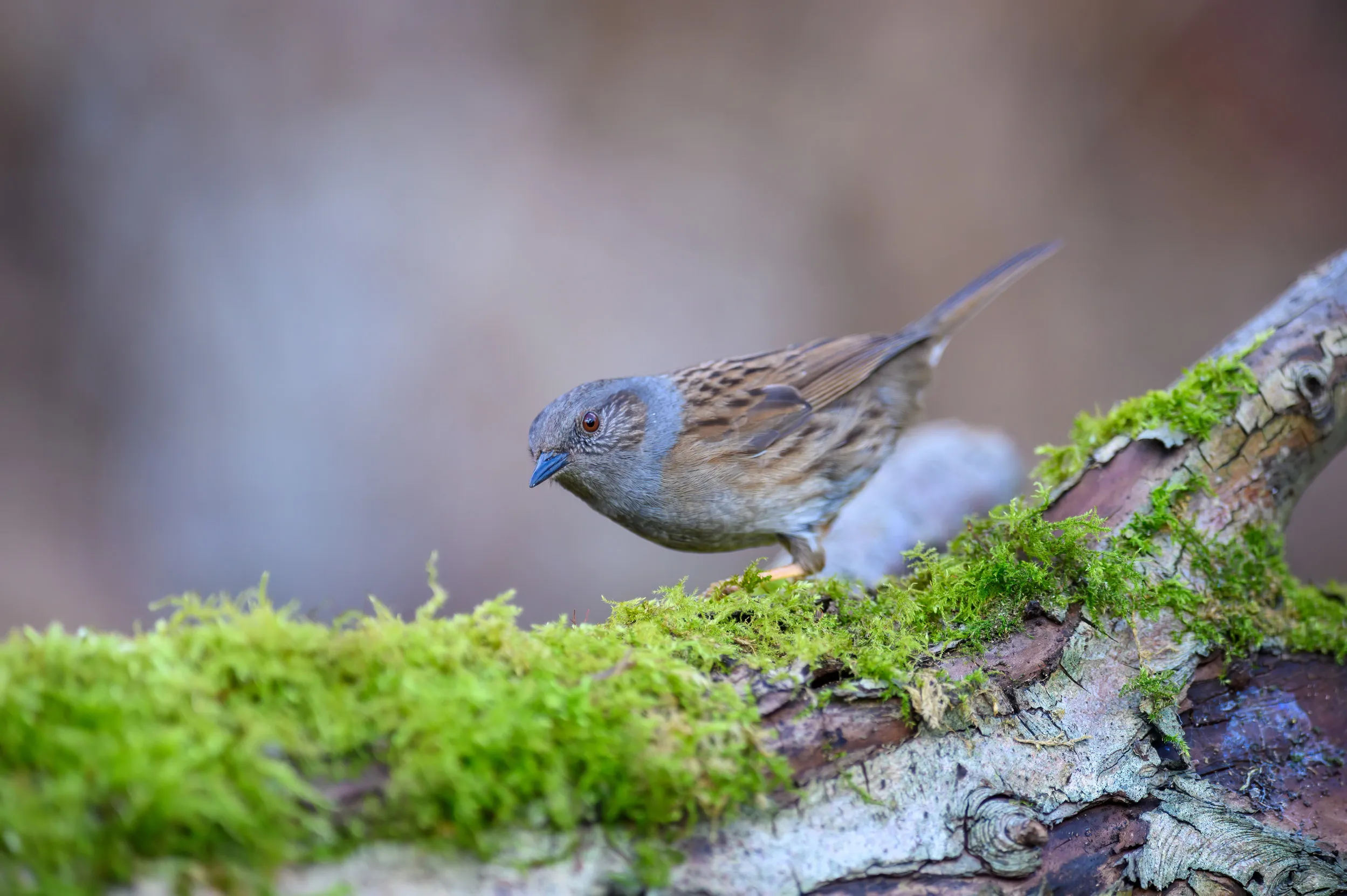
Dunnocks have a loud, squeaky warbling song, that sounds a bit like someone writing on a whiteboard with a creaky pen. They sing from bushes or high in trees, and you’ll mostly hear them in the first half of the year. Their call is a squeaky ‘peep’.
For an unassuming little bird, Dunnocks have some surprisingly complicated breeding partnerships. Pairs consisting of one female and one male are unusual. Often one female will openly mate with one male and then secretly mate with another, which encourages both males to care for any chicks. But sometimes, the males will mate with multiple females, and help look after several broods at once. Even more confusingly, there are situations where both males and females end up with multiple partners across multiple territories. But whatever the set-up, they like to build their cup-shaped nests in dense shrubs or bushes, and gardens are often perfect for their needs.
All year round
You don’t have to look far to see Dunnocks, as they’re very common garden birds throughout much of the UK (except Shetland). They’re quite happy living in small gardens, even in cities and suburban areas, but they’re particularly at home in gardens where there are dense shrubs they can nest in, and bird feeders for them to pick up scraps from. You can also see them in woodland and parks, farmland and moorland, except in remote upland areas.
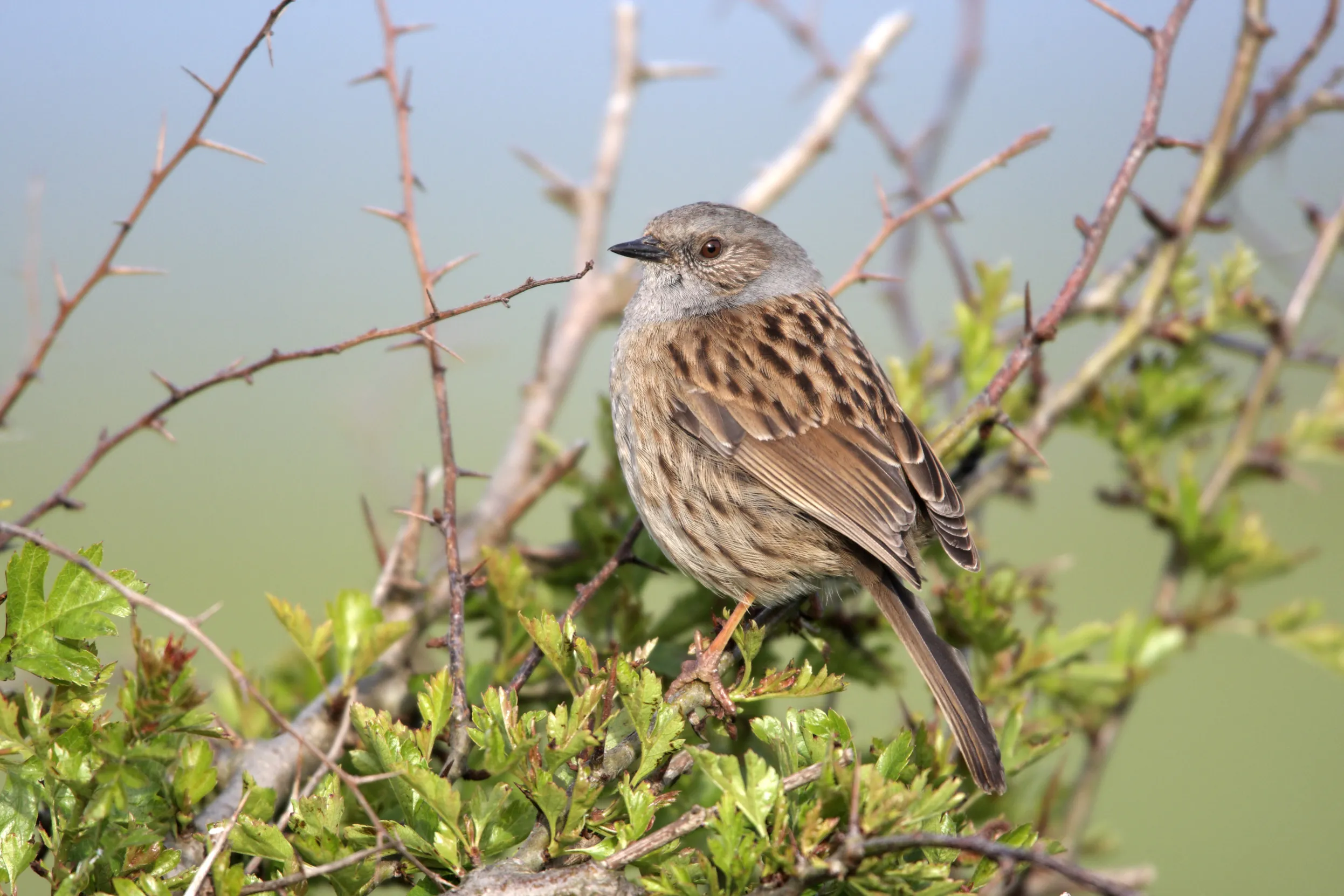
Dunnocks are also known as ‘hedge sparrows’ but they’re not sparrows at all – they’re actually the only UK member of the bird family called the Accentors.
UK conservation status - Amber
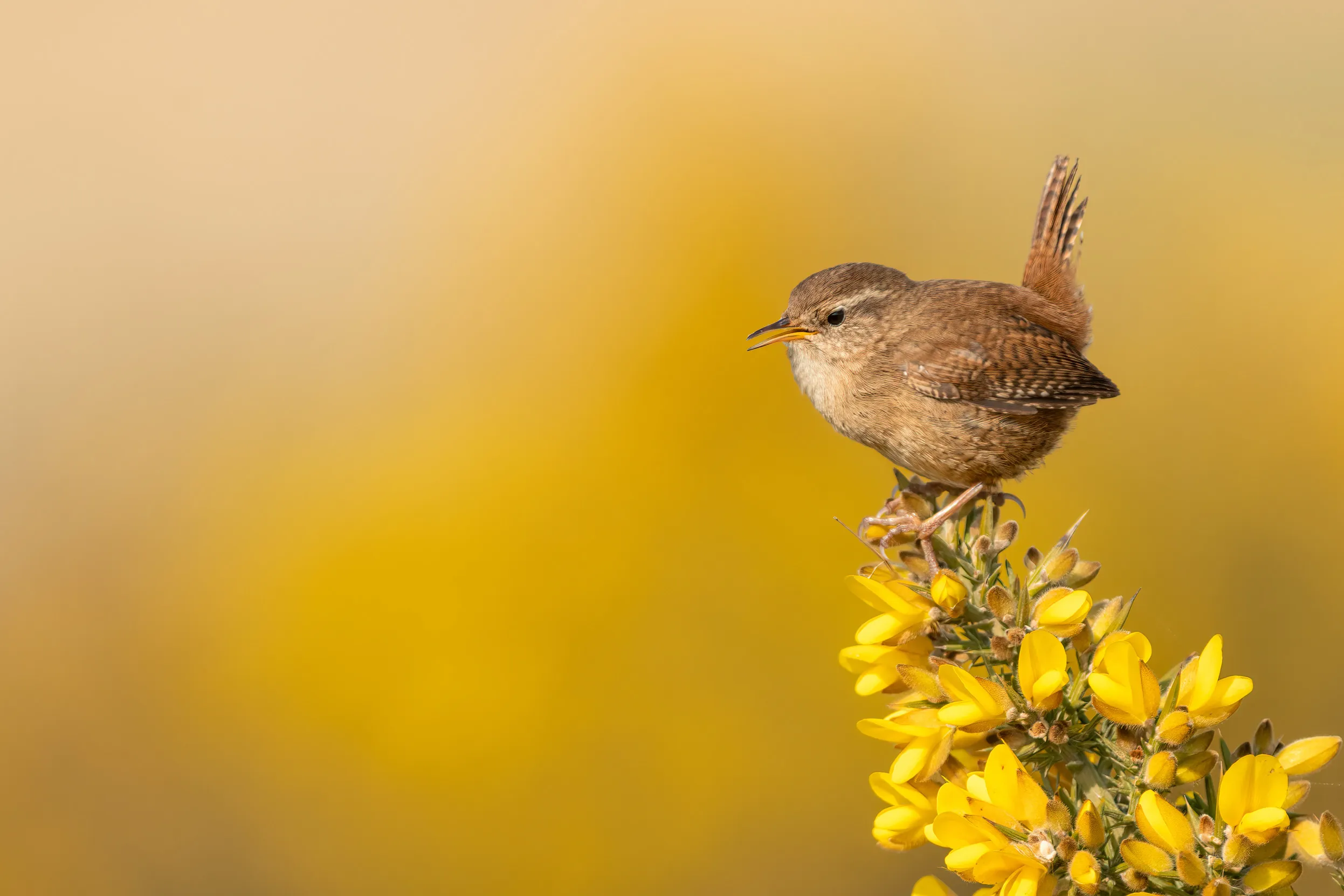
Wrens are always on the move, flitting about in the undergrowth, in rocky crevices and in trees, as they search for insects. They also eat seeds and berries, particularly in winter when insects are harder to find, and sometimes make the most of crumbs that have fallen from bird feeders. You might see one singing from an elevated perch.
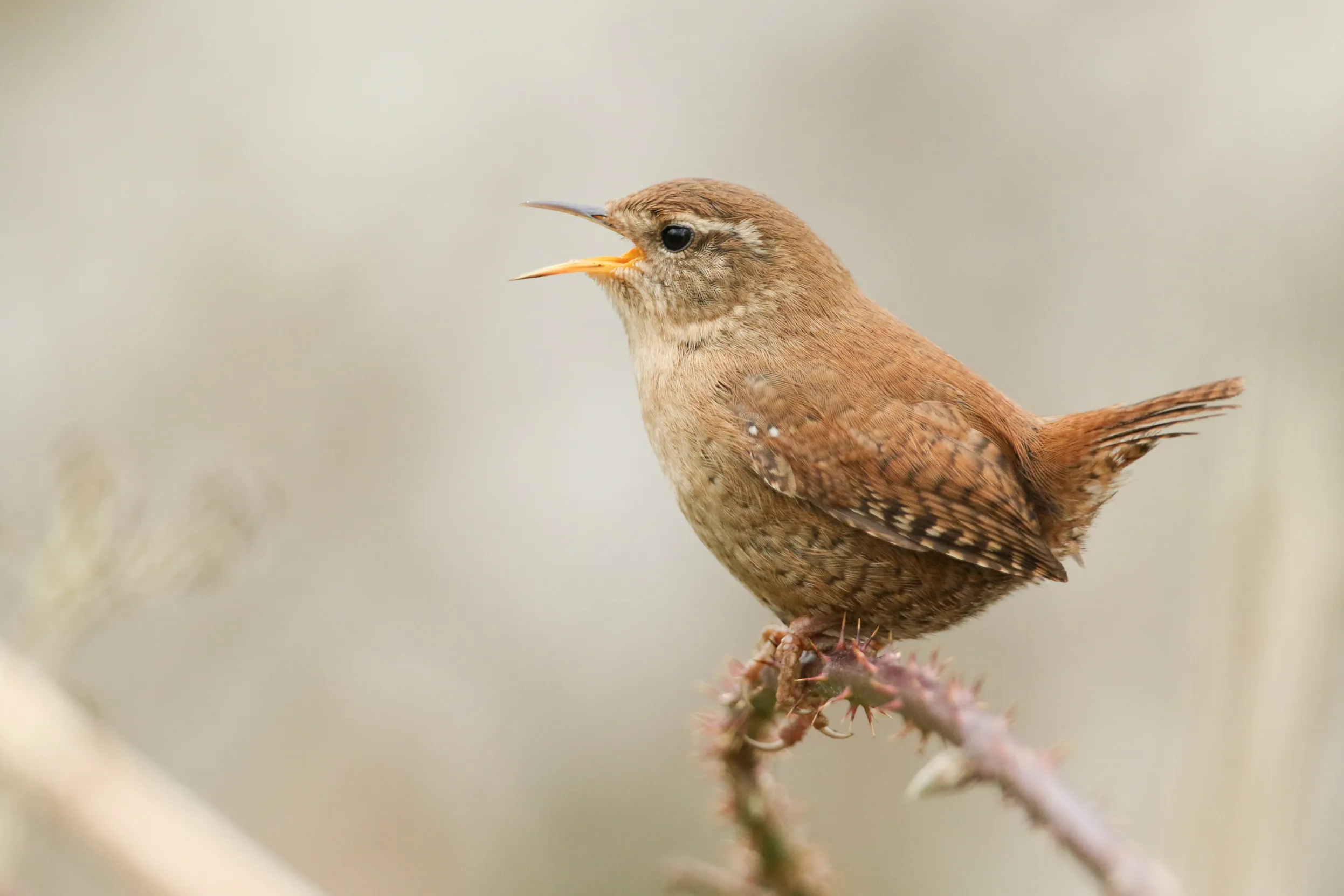
For such little birds, Wrens have an incredibly loud voice! Their song is a succession of high-pitched whistles, ending with a trill. Their call is a loud ‘tic-tic-tic’.
Males build several different nests in the nooks and crannies of trees, climbers, walls and banks. A female will inspect the various nest options before choosing one and lining it with feathers.
All year round
Despite being the UK’s commonest breeding birds, Wrens can be surprisingly difficult to see, because of their tiny size and habit of hiding away in vegetation. They live in most habitats across the UK, including mature gardens, woodlands and farmland.
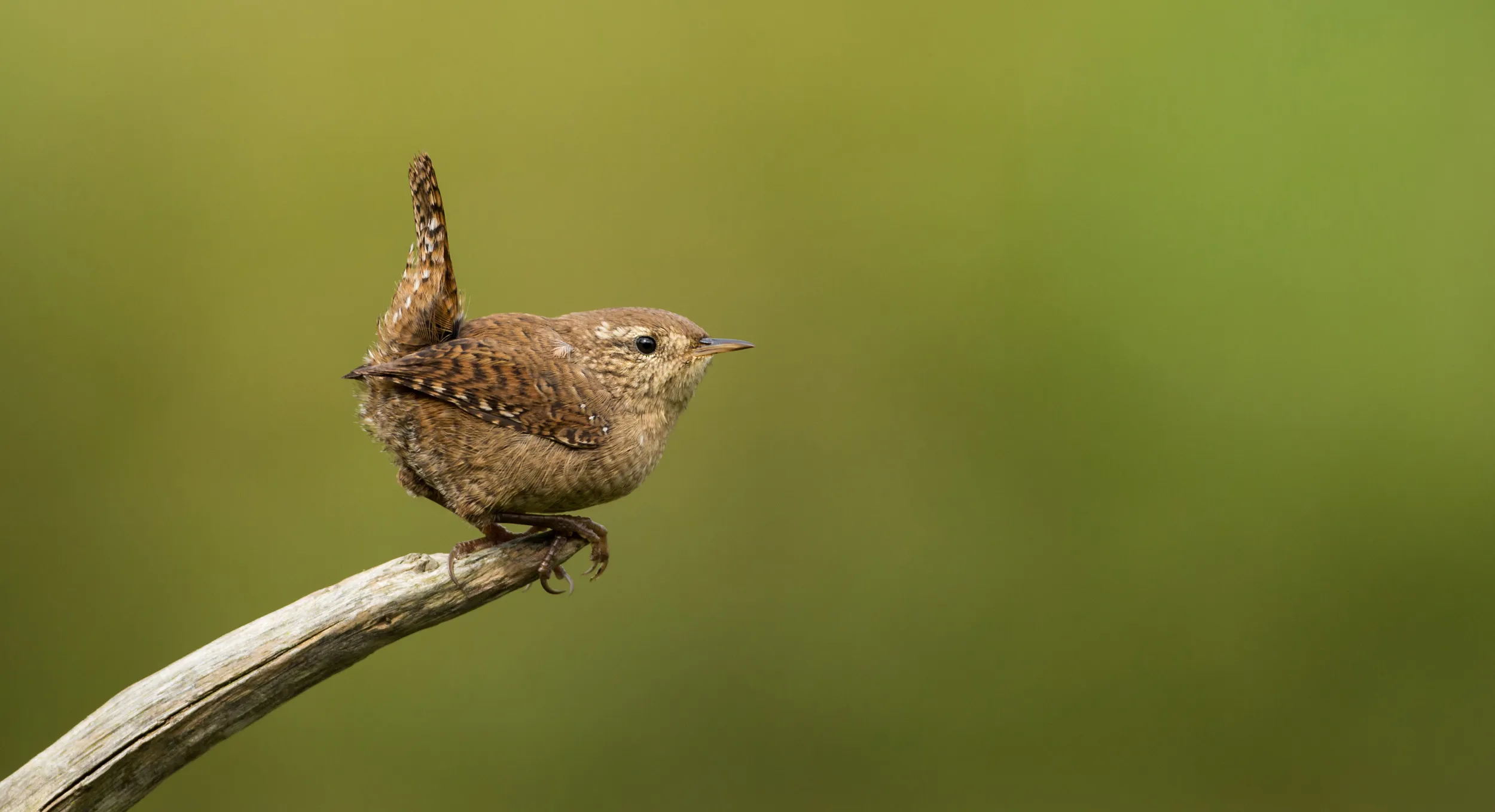
More than 60 Wrens were once found snuggled up together in a nest box to keep warm!
UK conservation status - Red

As their name suggests, Spotted Flycatchers are masters at catching flies and other insects, such as butterflies, wasps and craneflies. You might see one sitting on a branch, before darting out to catch an unsuspecting insect as it flies past.

The Spotted Flycatcher’s call is a repetitive, high-pitched ‘tzee, tzee’. Its song is a series of scratchy warbles and higher-pitched notes.
Spotted Flycatchers build their open, cup-shaped nests on ledges in and around buildings and walled gardens, as well as on creepers climbing up walls and trees.
Spotted Flycatchers are migrant birds that arrive in the UK from May to breed, before heading back to Africa between July and September.
You’re most likely to see Spotted Flycatchers in woodlands, as well as mature gardens and parks with lots of trees and other vegetation that support the insects they feed on. They will also use mature hedgerows with trees in farmland. Spotted Flycatchers are widespread across much of the UK.
.jpg)
Spotted Flycatchers declined by 88% between 1970 and 2018, putting them on the Red List of birds of high conservation concern.

With their bright red chests, adult Robins are pretty unmistakeable, but juveniles lack these characteristic red feathers and are speckly brown all over.
Unlike the colourful males, females Chaffinches are yellowish brown, with a white shoulder patch and stripe on the wing. Juveniles looks similar to females.
Despite their name, female Greenfinches are actually a dull brown colour, with a characteristic yellow stripe on their wings and tail. Juveniles look similar to females.

Juvenile Goldfinches have a streaky brown body and head, and lack the red, black and white markings seen on the face of adults. However, like adults, they have black wings with a bright yellow patch and a black tail with white marks.